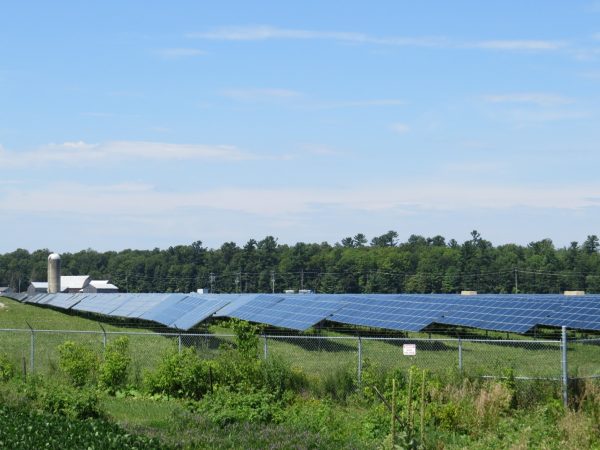
As I mentioned in my March OLA ENews article about the City of Ottawa’s New Official Plan (Ottawa’s New Official Plan Goes Off the Rails), what started out as a reasonable process soon became non-transparent and secretive in 2020 during the pandemic. The pandemic is still here, and the process has not improved – in fact, if anything, it has deteriorated.
My complaints with the process are:
- All public engagement since the last draft of the New Official Plan was released in November 2020 has been through social media. This doesn’t work well in rural Ottawa where broadband service is poor.
- The New Official Plan public engagement website page is badly designed and out-of-date. Information is presented willy-nilly, and not in chronological order, as it should be. There are no timeline details between “Draft Official Plan Tabled in late 2020” and “Council Votes on the New Official Plan Fall 2021”. We know that another version of the OP will be tabled in June 2021. https://engage.ottawa.ca/the-new-official-plan
- Official Plan companion documents are difficult, if not impossible to find. The next step in any OP is a series of Master Plans but there is no mention of them on the engagement page, despite a promise by staff at their March 24th virtual meeting on the OP, to add them. By following a trail of breadcrumbs, I discovered the Energy Evolution Strategy document which shows that the Climate Change Master Plan is well on its way to completion. https://engage.ottawa.ca/energy-evolution.
- The process continues to be non-transparent. Assuming we are connected and are trying to follow the process and study the documents, how are we supposed to know what documents are important and what the timelines for review are if this information is not available or not apparent on the engagement website. On March 24, 2021, the City had a virtual meeting titled New Official Plan Q&A. I attended and it was informative BUT we were told that although the meeting was being recorded, the session would not be made available to the public. I can’t image why not!
- Calls to delay the Official Plan have not been addressed at Committee or at Council. The Mayor, Jan Harder, Chair of Planning Committee, and Eli El-Chantiry, Chair of Agriculture and Rural Affairs Committee stated they will not put the request on their agendas. We are living in a changed world where intensification may not be the best strategy. I wrote to City staff on March 12 in support of the Federation of Community Associations’ request to delay the City’s Official Plan process to 2023. My letter also contained many questions about the direction the City is taking with their Official Plan and Energy Evolution Strategy. Other than getting a “Thank You for your Letter” response, I have had no reply. It is a fact that Covid cases are higher in densely populated areas. It is also a fact that more people are working at home, and these people are seeking housing outside of the City’s boundaries. Is the City making the right decision by implementing a strategy that is “unprecedented in both action and investment” and seeks to achieve a higher population density than any other city in Canada?
Given the state of the Official Plan process, is it any wonder why more people are not asking where and why the City is going in the direction outlined in their OP and Energy Evolution Strategy? Here is my review of the Energy Evolution Strategy. https://app05.ottawa.ca/sirepub/cache/2/ruouwudye1qq0hbaqgenp0lv/66270904302021095350181.PDF
This document describes what Ottawa will look like in the next 20 to 30 years. “Developed in collaboration with more than 40 staff representing six departments, almost 200 public and private stakeholders representing more than 90 organizations, and the Climate Change Council Sponsors Group, Energy Evolution is a community-wide initiative with a vision to transform Ottawa into a thriving city powered by clean, renewable energy.”
Published in September 2020 and received by Council at its October 28 meeting, this document outlines priority projects over the next five years to achieve Ottawa’s GHG reduction targets. These targets align with those from the Intergovernmental Panel on Climate Change (IPCC) to realize the target of reducing emissions by 100% by 2050. To achieve this (P. 12):
- All fossil fuels will have to be phased out;
- Heating and transportation systems will have to be nearly fully electrified or transition to zero emission;
- Waste heat utilization and renewable natural gas production will have to be added;
- Sufficient renewable electricity (mostly wind and solar) generation and electricity storage will be required to meet demand and offset emissions on the provincial grid.
Terms such as ambitious and aggressive have been used in the document to describe the strategy. “For Ottawa to achieve its short, mid, and long-term GHG reduction targets, the model calls for implementation of the aggressive scenario in almost all cases and in some cases, the model demands actions that exceed the aggressive scenario”.
What will it cost? “Out of the estimated $7.4B investment required by the municipality, $3.2B is required over the next five years to undertake the priority projects identified in Section 4. Of that, $2.6B is required for the transit network alone.” On October 28, 2020, Council approved that the 2019 Hydro Ottawa dividend surplus of $2.6M be used to fund a proposed spending plan in support of Energy Evolution projects. See the proposed spending plan at: https://app05.ottawa.ca/sirepub/cache/2/ruouwudye1qq0hbaqgenp0lv/66272004302021100403996.PDF
What changes might we see?
- Reduced dwelling sizes (p. 49)
- The majority of trips to be made by sustainable modes by 2046 (p. 49)
- Local energy generation and storage by renewable energy. Today, less than 6% of energy consumes in Ottawa is generated in Ottawa. (p. 50) 100% of new homes are net zero emissions by 2030. (p. 54)
- Existing building will be retrofitted, and new builds constructed to use heat pumps and electricity as natural gas, propane heating oil and diesel are phased out. (p. 51) Electricity becomes the primary fuel for all building types … (p. 53)
- (E)lectric vehicles must replace internal combustion engines and the use of diesel and gasoline as a fuel source for both personal and commercial vehicles. (p. 58) Electric vehicles (EVs) comprise 90% of new personal vehicle sales by 2030 and 100% by 2040. (p. 59)
- ByWard Market and part of downtown Ottawa are car free by 2030 and Congestion charges, EV only areas and increased parking fees. (p. 60)
- 98% of organics diverted by 2024 and 100% of paper waste diverted by 2042. (p.64)
- Where will it be built? By 2025, the City plans to install: (p. 69)
- 150 MW Solar
- 20 MW Wind
- 20 MW Hydro
- 20 MW Electricity Storage

If the above describes a place where you want to live, work, and play, then fair dinkum. If not, what do we do about it?
